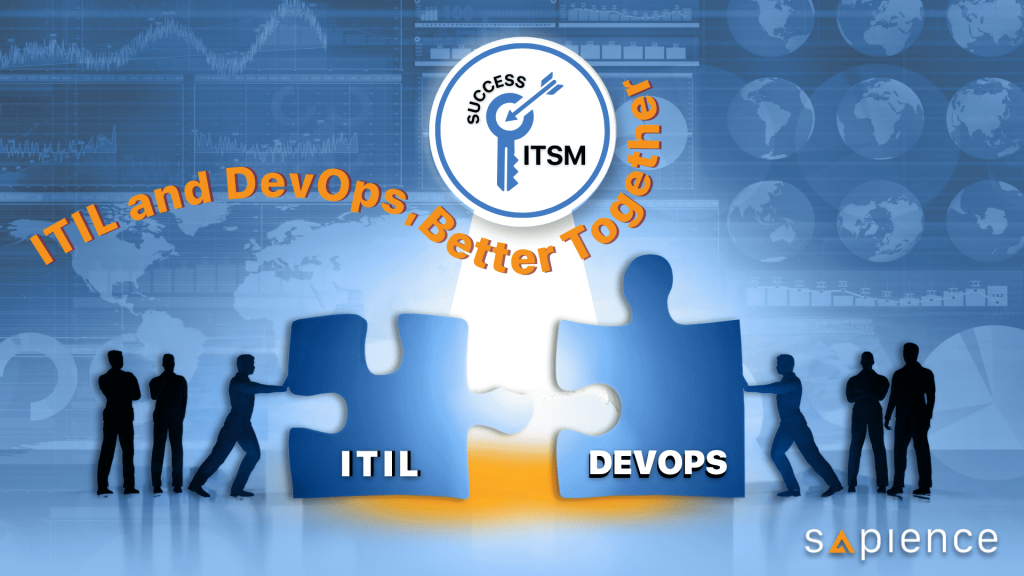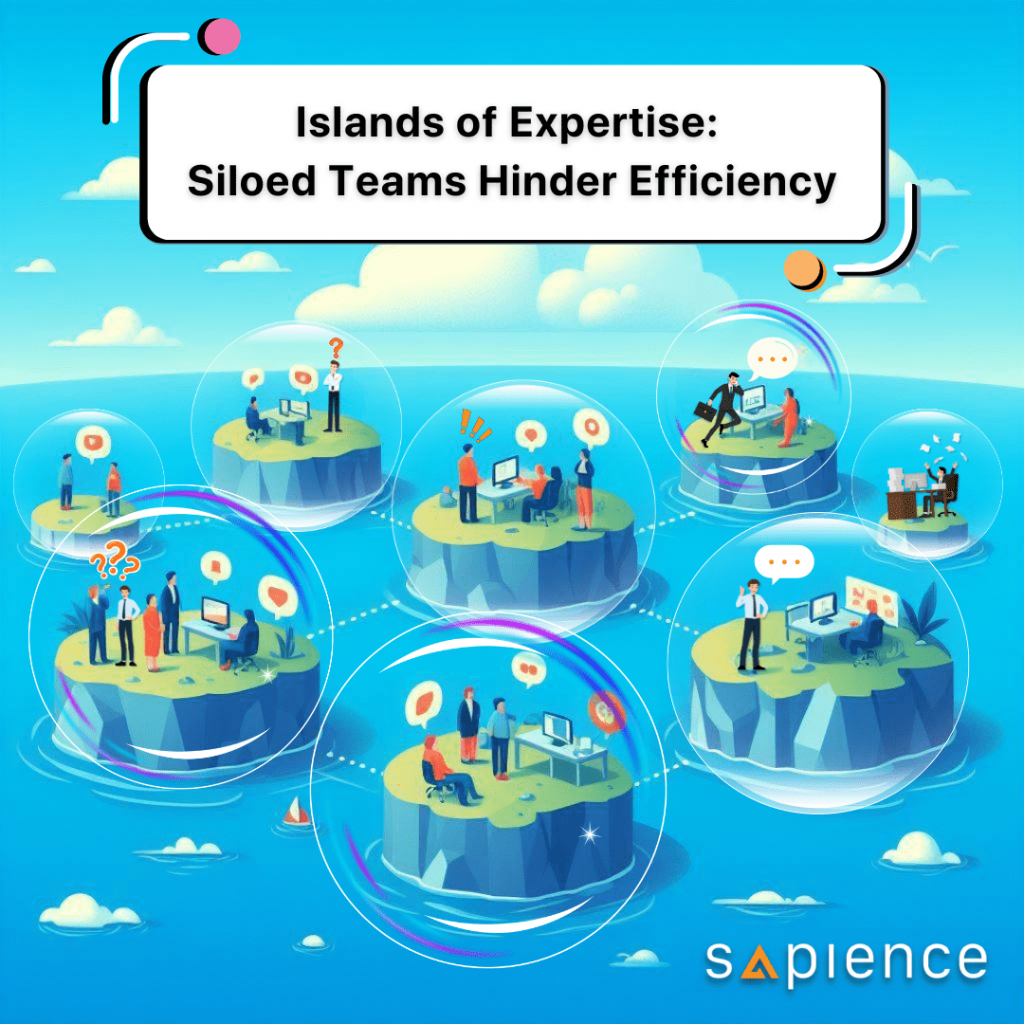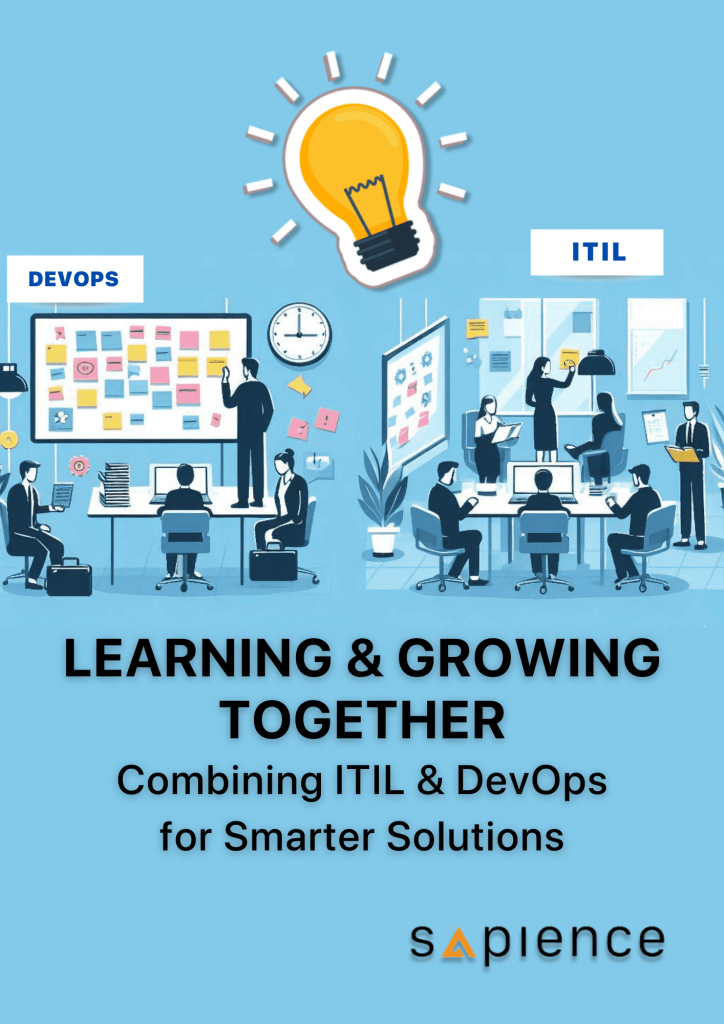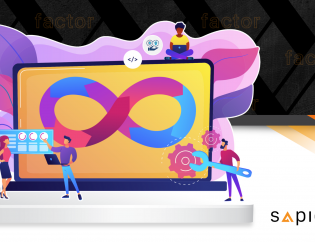ITIL and DevOps,
Better Together
Written by:
Principal Consultant
Sapience Consulting

The buck stopped with me, the newly appointed IT Manager at Singapura Inc.
In the retail world, Singapura Inc (SI) was big, with stores everywhere and an online presence via their functional, friendly but dated website. However, behind the scenes, things weren’t going smoothly. Sometimes, the website crashed, making customers angry and leaving them unable to complete their purchases online. This meant less money for the company.
Inside SI’s office, different teams didn’t talk much. They worked on their own, like separate islands. This made it hard to fix problems quickly, costing the company time and money. Problems that were eventually fixed were done acrimoniously, with accusations and finger pointing often thrown at the start of the problem solving sessions.


When SI wanted to add new stuff to the website or fix things, it took a long time. This meant customers had to wait unreasonably for cool features or to get their issues addressed. Wasted opportunities abound and the company couldn’t make as much money as they could.
Things weren’t organised either. Each team did things their own way, making it confusing for everyone. Customers didn’t know what to expect, which made them unhappy and less likely to come back.
Nobody could see what was going wrong before it was too late. This meant SI was always putting out fires instead of stopping them before they started. It made the company look bad and cost them even more money.
All these problems were hurting Singapura Inc’s business. The CIO, a well-meaning and kind man, was bereft of ideas and did not have the stomach for major changes as retirement age was creeping up. He nodded his approval when I propose to lead the necessary changes. We needed to find a better way to do things if we wanted to keep growing and make their customers happy again.
I had heard of frameworks or methodologies that were helpful to address these issues. I had heard of ITIL ® and DevOps. But then, which one was better equipped to address the current condition?
It was a false dilemma. ITIL and DevOps were better together. This was how I did it.


Understanding Pain Points
With a cross-functional management team, we explored crystalising the problem and the pain points. Here’s what we got:
- Service Disruptions: Frequent service disruptions affecting both online platforms and in-store systems lead to customer dissatisfaction and revenue loss.
- Siloed Teams: The IT department operates in silos, with separate teams managing different aspects of IT services, leading to communication gaps and inefficiencies.
- Slow Deployment: Traditional deployment practices result in slow release cycles, hindering the company’s ability to roll out new features and updates in a timely manner.
- Lack of Standardisation: Inconsistent processes and lack of standardisation across IT operations contribute to confusion and errors.
- Limited Visibility: The lack of comprehensive monitoring and reporting mechanisms makes it challenging to identify and address issues proactively.
** What We Decided To Do **
Now that we understood what the issue was, we explored potential solutions. We recognise that no single approach is equipped to handle the layered issues that we have. An integrated and balanced approach was needed to streamline processes and workflow, improve collaboration, and enhance the overall efficiency of IT services.
We set out to execute these few items over a period of time in a careful manner. We recognise that the people will need to unlearn and learn new ways of working, adapt to new work methods and absorb and internalise these in a sustainable way.
We kept communication open and adjusted the execution based on feedback as the management team was learning along the way, too!
Here’s what we did:
- Implemented ITIL framework for service management, including incident management, change management, and problem management processes. This involved establishing clear procedures for handling service disruptions, coordinating change requests, and addressing underlying issues to prevent recurrence.
- Introduced DevOps practices to foster collaboration between development and operations teams. Implemented automation tools for continuous integration and continuous delivery (CI/CD) pipelines to automate testing, deployment, and monitoring processes. This streamlined the deployment pipeline, enabling faster and more reliable releases.
- Standardisation and Documentation: Developed standardised procedures and documentation for IT processes based on ITIL best practices. This included creating a centralised knowledge base for IT staff to access relevant information and guidelines easily.
- Monitoring and Analytics: Deployed robust monitoring and analytics tools to gain real-time insights into the performance and health of IT services. Implemented proactive monitoring for early detection of issues (Next steps are to build on that and build observability platforms that can capture information to understand novel condition and invest in predictive analytics to anticipate potential bottlenecks or failures)
- Training and Skill Development: Conducted training programs to upskill IT staff on ITIL and DevOps principles, tools, and practices. Encouraged a culture of continuous learning and improvement to adapt to evolving technologies and best practices.

What Success Looks Like
The implementation of our plans took upwards of 18 months, slogging through resistance and building business cases for the investments that were needed. The results, however, were undeniable.
- Reduced Service Disruptions: By implementing ITIL incident management practices and improving monitoring capabilities, the company experienced a significant reduction in service disruptions (down 65-70%), leading to improved customer satisfaction and revenue increase.
- Enhanced Collaboration: The integration of DevOps practices promoted collaboration and communication between development and operations teams, resulting in faster resolution of issues (Mean Time to Repair reduced by 80%) and smoother deployments (80% drop in failed changes).
- Accelerated Deployment: Adoption of CI/CD pipelines and automation tools enabled the company to shorten release cycles, allowing for quicker delivery of new features and updates to meet business demands.
- Improved Efficiency and Standardisation: Standardised processes and documentation improved efficiency across IT operations, reducing errors and ensuring consistency in service delivery.
- Greater Visibility and Control: The implementation of monitoring and analytics tools provided greater visibility into IT services’ performance and health, empowering IT teams to proactively identify and address issues before they impact users.
The work is still ongoing and we do have many battles and issues to overcome – some new ones have surfaced. The climate is much healthier now with business and IT actively collaborating. The respect and recognition that the IT team have with the business is something that I am proud of. Work continues.
The buck stopped with me, the newly appointed CIO at Singapura Inc.
Learn more about how ITIL and DevOps can work together for your organisation in this webinar.
Learn more about ITSM and DevOps with these available courses today!
ITIL®4 Specialist: Monitor, Support and Fulfil
ITIL®4 Specialist: Collaborate, Assure and Improve
ITIL®4 Specialist: Plan, Implement and Control
ITIL®4 Specialist: IT Asset Management
ITIL®4 Specialist: Business Relationship Management
Devops Foundation
DevOps Engineering Foundation
DevSecOps Foundation
Site Reliability Engineering Foundation
Check out our IBF-approved courses! There is no better time to upskill than now!












